Published on
Updated on

Viticulture Information News
Week of 21 April, 2025
Columbia, MO
Contents:
- Plan now for managing Sour rot
- Typical white grape cultivar ripening over time
- Insecticides fruit flies Drosophila spp. have developed cross-resistance
- Nominations for Missouri Wine and Grape Board-Technical Committee
- Weather Outlook for April 28 to May 2, 2025
- Cumulative Growing Degree Days for Seven Grape Growing Regions of Missouri from April 1 to April 14, 2025
“Plans are of little importance, but planning is essential” – Winston Churchill
Plan now for managing Sour rot
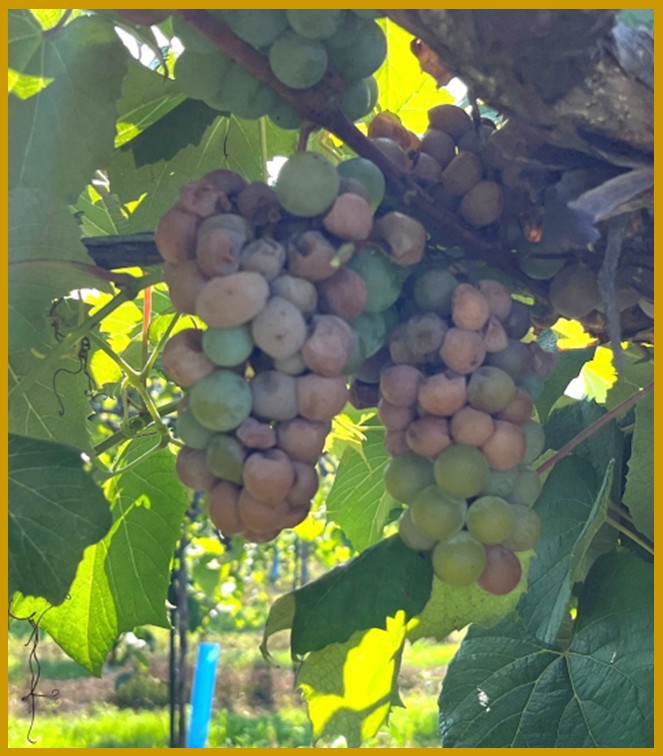
Figure 1. Sour rot on grape clusters of the grape cultivar Missouri Riesling in late August near Augusta, Missouri. Photo credit: D. Volenberg.
Thinking ahead and planning are processes that bear fruit whereas plans may change the planning process is the critical step forward. This is true with most crop protection strategies in grape production. The strategies are planned and implemented to protect the crop rather than reactive once the crop has succumbed to pest pressures. Planning is important when managing the Sour rot complex.
The symptoms of Sour rot are very distinct. The berries on white grape cultivars turn a light brown (Figure 1) whereas on red cultivars the berries turn brick brown. The most distinctive characteristic of Sour rot is the vinegar smell of infected berries. This vinegar smell is unique to Sour rot.
Sour rot can be considered an opportunistic disease complex. Sour rot needs an entry point into the grape berry to initiate disease. The entry point is the loss of integrity of the berry skin. Damage to the berry skin may be mechanical damage such as hedging, skirting, and mechanized leaf removal. The berry integrity damage may occur from hail, bird damage or other mammals. Further, damage to berry integrity may be from inadequate management of grape berry moth, powdery mildew or other disease pressures that directly impact berry integrity. In some cases, the grape cultivar produces tight clusters that result in berry splitting. An example of a grape cultivar that produces tight clusters is Vignoles.
Protecting the berry integrity is the first critical step in managing Sour rot. Whereas some mechanisms that negatively impact berry integrity cannot be simply managed such as hail and grape cultivars such as Vignoles prone to loss of berry integrity other mechanisms can be managed. Managing insects and diseases that can damage berry integrity is critical. As well as managing birds and other mammals that negatively impact berry integrity. Once these management strategies have been implemented follow the plan below to limit the impact of Sour rot.
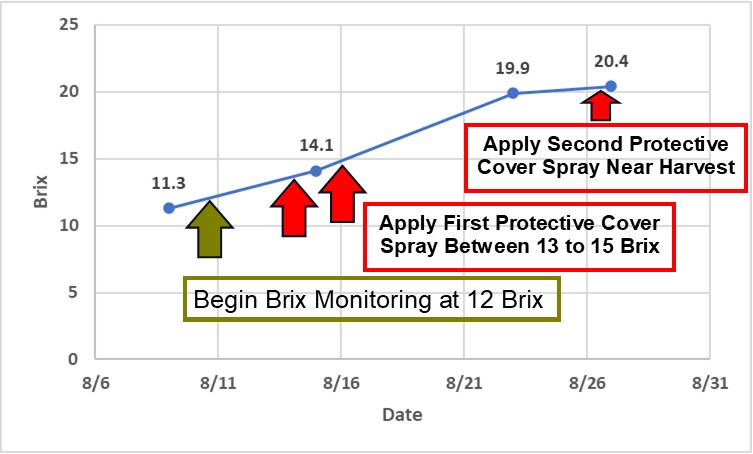
Figure 2. Graph represents typical white grape cultivar ripening over time and delineates when brix should start to be monitored and at what brix level management should be implemented in a two-cover spray program to reduce the severity of Sour rot.
The Sour rot management program below is rooted in protecting the crop prior to the disease complex taking hold.
Research out of Cornell suggests the following:
· Start monitoring your vineyards for Sour rot once the grapes attain 12 brix
· Once berries attain 15 brix and wet rainy conditions persist coupled with warm temperatures this should be a red flag that sour rot is likely
· Warm evening temperatures between 68-77° F coupled with rainy conditions when berries attain 15 brix should also be cause for alarm
· Sour rot initiates on wounded berries in which the berry skin has been damaged. Although some evidence suggests that berry wounding occurs in tight clustered cultivars such as Vignoles simply due to the cluster architecture. There are other entries for Sour rot such as bird damage, hail damage, grape berry moth larvae, or mechanical damage to berries from mechanized leaf thinning, canopy management etc.
· The application of Oxidate plus an insecticide staring at 15 brix followed by a second application prior to harvest is as effective in controlling Sour rot as compared to four applications
· Starting a Sour rot management program after symptoms appear is not as effective as starting a pre-emptive Sour rot management program prior to Sour rot symptom development
· The two-spray program worked effectively during a low incidence year (dry season) and a high incidence year (wet season) as compared to a four-application spray program
Take home: Monitoring the fruit brix, being aware of the weather conditions and timing the spray application, are key to Sour rot management. Being pre-emptive can help reduce Sour rot and save you dollars on pesticide applications.
A few suggestions on the Sour rot plan above:
· Once grapes reach veraison the brix levels increase rapidly. If weather conditions produce bright sunny warm days during at the onset of veraison, you should monitor brix at least a couple times per week. As grapes near harvest maturity the brix levels climb more slowly on a week-to-week basis. Plan and set a grape quality window for harvest so that you can establish an application window for managing Sour rot.
· If you make a spray application within the Sour rot program above and heavy rainfall occurs, be ready to repeat the application as soon as weather conditions make it possible.
· Monitor the crop for Sour rot symptoms even prior to reaching 12 brix. A healthy vine with a reduced fruit set will have grape clusters with advanced maturity (higher brix) than vines with a larger crop set.
· Monitor the weather conditions for rain. As Vignoles reaches harvest maturity berries often split providing an entry for the Sour rot complex.
· Your insecticide choice is critical in controlling fruit flies Drosophila melanogaster as fruit flies have developed resistance to some IRAC modes of action (Table 1). Do not rely on an insecticide from a single IRAC group to control fruit flies. Rotate IRAC groups within your management program and avoid repetitive applications of insecticides from the same IRAC group. As an example of insecticides from the same IRAC group 3A, Mustang Maxx, Brigade 2EC, and Baythroid XL. As you plan your resistance management program (RMP) be aware of insecticides applied earlier in the season. These insecticides, although targeting other insect pests, may be putting selection pressure on fruit flies. An example would be Mustang Maxx or Assail applied for the control of Japanese beetle or Grape berry moth. As you construct your RMP for fruit flies consider integrating Delegate (spinetoram) IRAC group 5 and/or Verdepryn (cyclaniliprole), IRAC group 28.

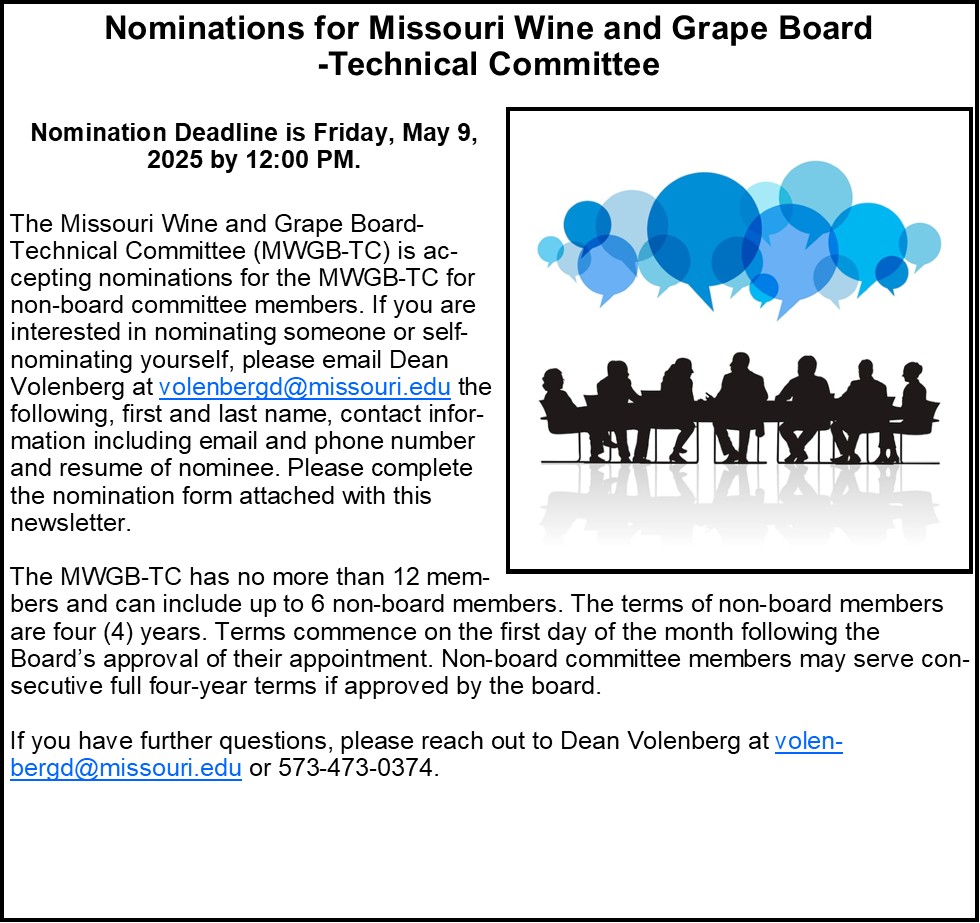
Weather Outlook for April 28 to May 2, 2025
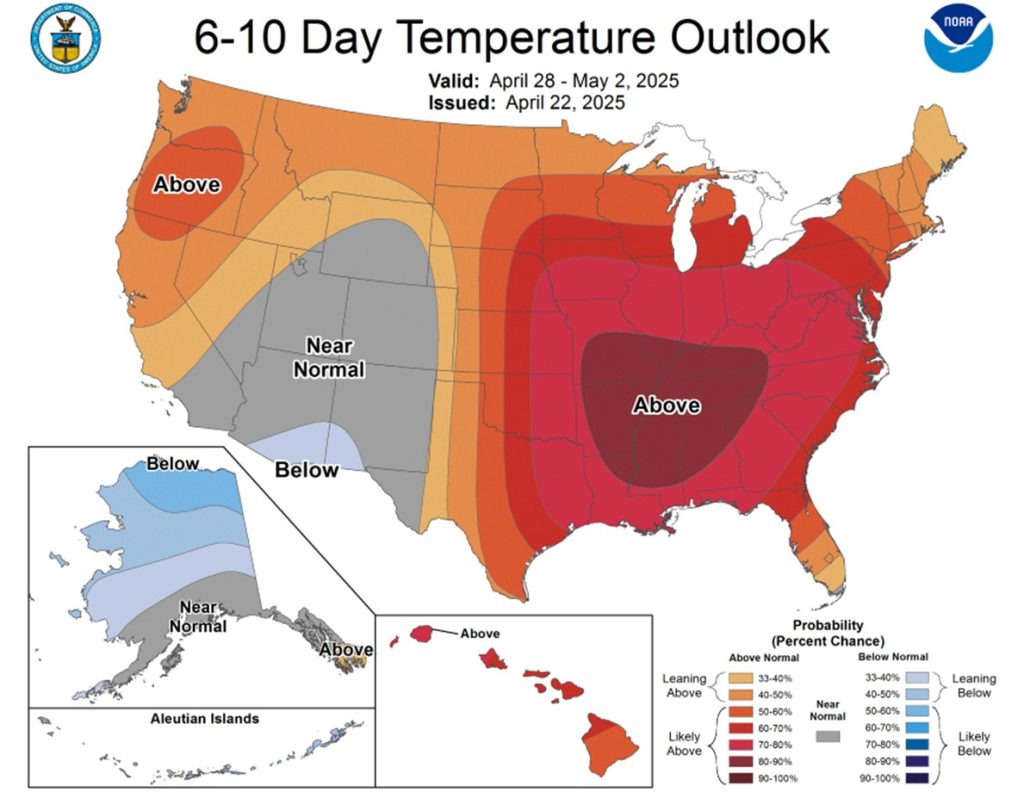
Temperature forecast for April 28 to May 2, 2025. Image credit: Climate Prediction Center 6-10 Day Outlook- NOAA

Precipitation forecast for April 29 to May 3, 2025. Image credit: Climate Prediction Center 6-10 Day Outlook- NOAA
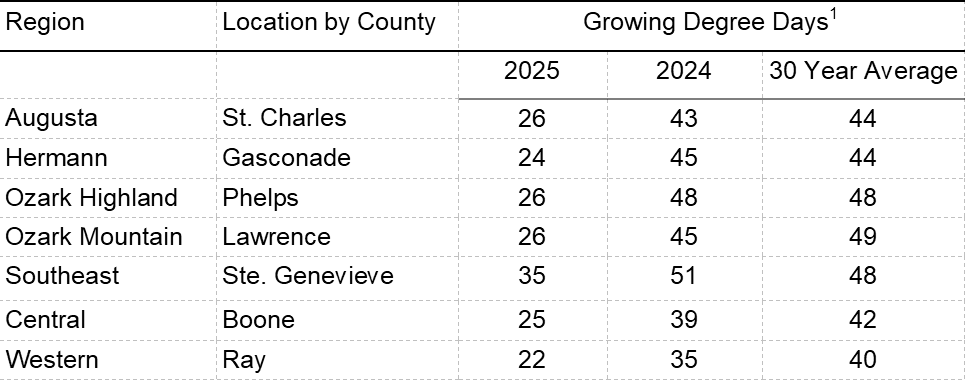
Cumulative Growing Degree Days for the Seven Grape Growing Regions of Missouri from April 1 to April 14, 2025.

To determine the number of growing degree days accumulated in your area since April 1. Use this tool.
Please scout your vineyards on a regularly scheduled basis in an effort to manage problem pests. This report contains information on scouting reports from specific locations and may not reflect pest problems in your vineyard. If you would like more information on IPM in grapes, please contact Dean Volenberg at 573-882-0476 (office) 573-473-0374 (mobile) or volenbergd@missouri.edu